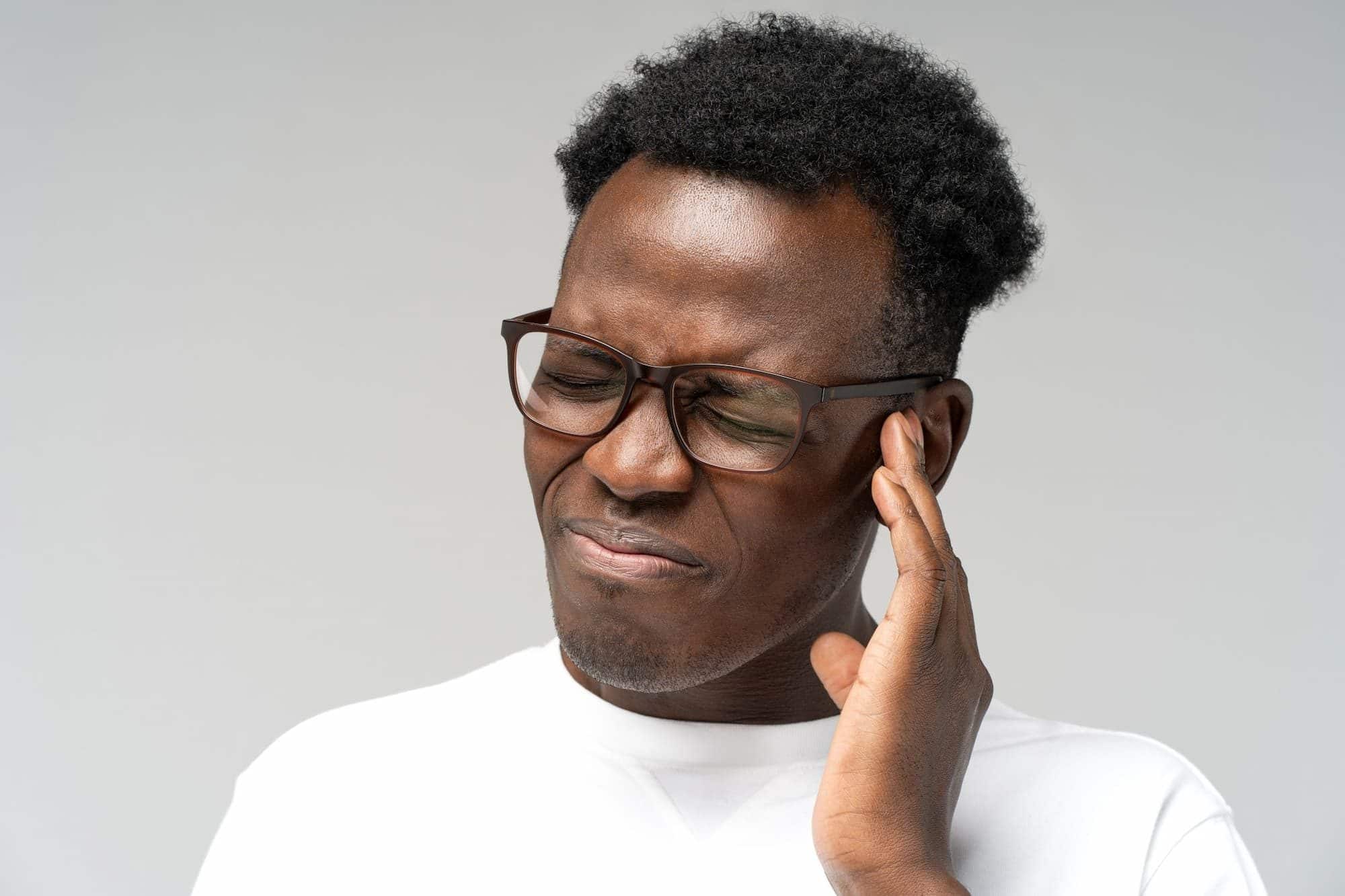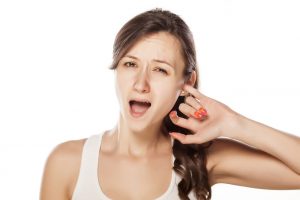Found yourself with a blocked ear and in need of an ear wax removal home remedy? We’ve compiled a guide on how to remove ear wax at home while ensuring your ears are looked after.
The first thing to remember is that earwax is a completely natural substance – in fact, it’s healthy. It helps protect and lubricate the ear canal while also trapping dust and dirt, preventing it from travelling further down the ear. Ear wax that doesn’t cause a blockage or discomfort should remain untouched.
The ear has a self-cleaning mechanism. This is enhanced by movements of the jaw to carry wax out of the ear via a conveyor belt motion and loosen it at the external ear, allowing the wax to then either fall out or be wiped away.
This system usually works effectively to remove ear wax, but occasionally we can still experience a build up of wax which can cause discomfort. Symptoms such as hearing loss, feelings of fullness and blockage, and itching are common signs that you may be experiencing an ear blockage from wax build up.
If you find yourself in this position, you may consider how to remove ear wax at home? Follow these handy hints provided by our helpful Earworx specialists to ensure you don’t risk damaging your ears in the process.
Is it Safe to Perform Ear Wax Removal at Home?
Our ears are quite a sensitive and delicate part of the body, so it’s important to understand that all home remedies for blocked ears carry a certain level of risk. However, some methods are safer than others – depending on your circumstances.
It is always recommended to seek clinical advice before attempting ear wax removal at home. Some home remedies are only suitable to undertake if there are no existing issues with the ear canal or drum, such as an eardrum perforation, ear surgery, or a current or suspected ear infection. If you are unsure if your blockage is part of a deeper problem, check with your doctor first.
Home Remedies to Remove Ear Wax
Softening Drops
One of the safest home remedies for removing ear wax is through the use of earwax softening drops. It’s important to note that these can only be used if you have an intact eardrum and don’t have a current or suspected ear infection.
Readily available from most chemists, these drops work by softening and gently dissolving the built up wax. Ideally the broken down wax can then be wiped away from the outer ear. While there are a range of commercial softening products available, we recommend using chemist grade olive oil softening drops, or Ear Clear to get the job done effectively. This may take up to a week or longer to be effective.
Once you’ve used the softening drops, it’s a good idea to consult a professional to ensure no built up wax remains.
Flushing with Warm Water
Earworx Registered Nurses do not recommend flushing with water. Whilst results of one study found that softeners followed by self-irrigation were more likely to be cost-effective than softeners followed by irrigation at primary care1, flushing with water is not without its complications2. This first study also determined that ‘removal by a nurse practitioner/professional was better than self-irrigation’1. If you choose to use this method at home, ensure you use only chemist based bulb syringes and products and strictly follow any instructions for use including water temperature and pressure. Carefully consider the use of this remedy as it may not be suitable for your circumstances and could risk further damage. Professional advice is recommended as previous ear surgery, a hole in the eardrum, or a current or suspected ear infection may make this method unsafe.
Precautions to Take With Home Remedies
As we mentioned earlier – the presence of ear wax is completely normal. If it’s not causing a blockage or discomfort, it’s best left alone. Overcleaning the ear can cause the ear canal to become itchy and irritated without the wax to lubricate it.
Contrary to popular belief, it is important to try and avoid sticking a cotton tip, or any small object, into the ear canal to clear out the blockage. Doing so can push wax further down the ear canal which could actually worsen symptoms. Sticking small objects into the delicate ear canal can also inadvertently cause trauma to the ear canal or drum. If you must use a cotton tip, use it only on the external ear to clear away wax that has already made its way out of the canal.
Ear candles are also a big ‘no-no’ when it comes to finding ways to remove ear wax at home. Despite being heavily popularised, they can actually result in pushing wax further into the ear canal. The candles also carry the risk of burns to the hair canal and ear hairs, and hot wax being dripped onto the drum.
If Home Remedies Aren’t Working
If you aren’t seeing an improvement in symptoms following the home remedies or simply want to avoid the risk of causing further damage, we can help.
Earworx Registered Nurses use a procedure called micro suction to remove wax from the ear canal without having to touch the ear canal wall or drum. This is one of the safest and most reliable methods to remove earwax as it avoids the risk of damaging the sensitive ear canal and drum.
If you’re after a safe and effective treatment to remove ear wax, contact Earworx to book an appointment today.
-
Clegg EJ et al 2010, The safety and effectiveness of different methods of earwax removal: a systematic review and economic evaluation, Health Technology Assessment Vol 14 no.28
-
Bird S 2003, The potential pitfalls of ear syringing: minimising the risks, Australian Family Physician, 32(3); 150-1




